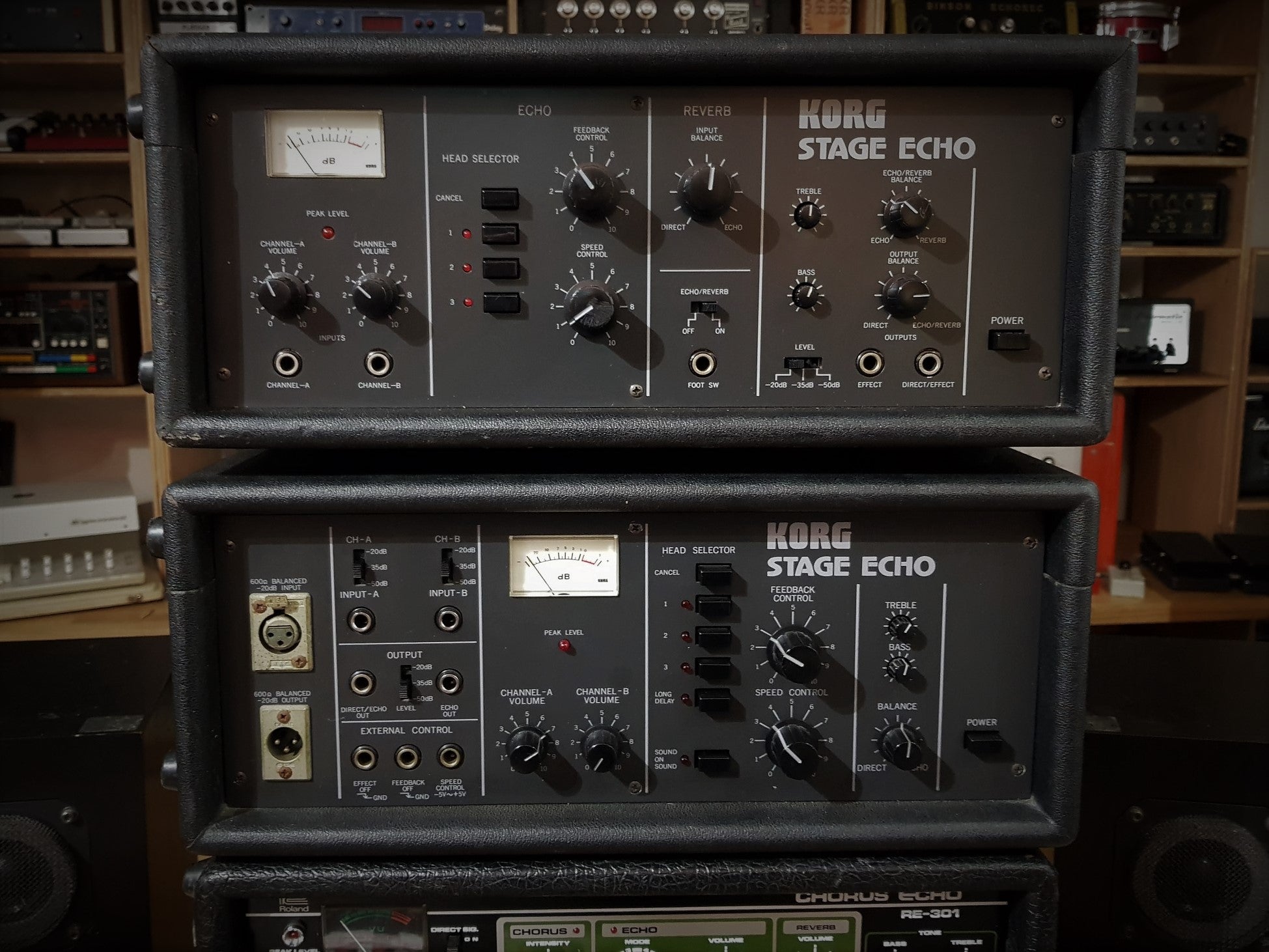Product Feature
Korg Stage Echo

Given Korg’s deserved reputation for innovation, it may come as a surprise to many that the Korg Stage Echo SE-500 was only launched in 1977 - a full four years after Roland’s first Space Echo, the RE-100.
A short introduction to the Korg tape echoes – models SE-300 and SE-500. It is an extract from this longer blog post by Tony which goes into more detail on the history and development of these machines.
We’ve also begun gathering some info to help you choose between Korg or Roland Echo.
If you’re looking for replacement tape loops for your Korg Echo, click here.
Korg were certainly playing catch up when they entered the echo market; the mighty RE-201 had been in production for three years and was proving a very successful and profitable product for Roland.
One advantage of following in Ikutaro Kakehashi’s footsteps was that Korg were able to marry many successful elements of the Space Echo with features that would please both their synthesizer customers as well as guitarists and studio users.
For the synth and studio heads, there was CV control of the delay time – this allows users of Korg’s flexible semi-modular MS series synths (and others with CV out) to get creative with their repeats with suitably freaky results. Guitarists and keyboard players could have fun layering their instrument using the Sound On Sound feature (Brian May anyone?). Mike Battle’s Echoplex EP-2 was the first tape echo to feature Sound On Sound back in 1970; coincidentally, Roland only added SOS to their tape echo range in the same year as the SE-500’s debut with the RE-301 Chorus Echo (but Korg’s execution was much better and Roland only surpassed it with the RE-501).


For the synth and studio heads, there was CV control of the delay time - this allows users of Korg’s flexible semi-modular MS series synths (and others with CV out) to get creative with their repeats with suitably freaky results.
Guitarists and keyboard players could have fun layering their instrument using the Sound On Sound feature (Brian May anyone?). Mike Battle’s Echoplex EP-2 was the first tape echo to feature Sound On Sound back in 1970; coincidentally, Roland only added SOS to their tape echo range in the same year as the SE-500’s debut with the RE-301 Chorus Echo.
In addition, the SE-500 had a long delay feature with repeats up to a whopping 1500ms – impressive for a tape echo at the time (remaining so to this day). The long delay and three other playback heads could be switched in and out independently or in combination for a range of patterns. The Stage Echo’s compander-based noise reduction system made for a cleaner-sounding tape echo – certainly more HiFi than those that had gone before. The addition of balanced inputs/outputs on XLR sockets reinforced the SE-500’s position as a serious studio machine for the professional user.

The SE-300 launched a year later, in 1978, offering spring reverb and very flexible mixing and routing options between dry/delayed signal and the reverb tank.
This was also the year that saw Roland launch their first BBD chip-based analogue echoes (the DC-30 and DC-50), whose maintenance-free reliability and portability were the beginning of the end for tape echoes. Given the fateful timing of their release, it’s hardly surprising that Korg’s Stage Echoes are harder to track down than their celestial Roland cousins, having been produced in much smaller quantities.
However, scarcity is far from the only reason to seek out one of Korg’s Stage Echoes; their alternative approach to Roland’s staple fare offers the discerning echo enthusiast additional menu options to whet the appetite.
They are highly-regarded by those looking for a cleaner, more hifi echo sound than the earlier Space Echoes (while remaining distinct from Roland’s own cleaner-sounding RE-501/SRE-555). Personally, I love the flexible mixing options between on the SE-300: three uncomplicated balance knobs make this machine unique. The controls are:
- Reverb Input Balance – between direct and echo signals
- Echo/Reverb Balance
- Output Balance – between dry and echo/reverb signals
They offer immediate and complete control over the balance of the dry/echo/reverb signals enabling you to position the signal in the soundfield; as gratifying in use as it is simple in concept. If you want to push the repeats further into the distance, add some reverb to the echo signal only; or add reverb to dry/wet signals and adjust the balance to taste. Clumsy to describe in writing, simplicity itself in practice!

Stage Echo Demos:
Korg SE-300 Demo
A good run through of the features here from Hiwattbob.
We also have a whole page of Roland and Korg demos.
Need to know more? We’ve got an every-growing mountain of tape echo resources on the site, including:
